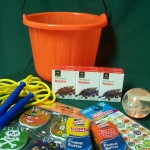Normal
0
false
false
false
EN-US
X-NONE
X-NONE
/* Style Definitions */
table.MsoNormalTable
{mso-style-name:”Table Normal”;
mso-tstyle-rowband-size:0;
mso-tstyle-colband-size:0;
mso-style-noshow:yes;
mso-style-priority:99;
mso-style-parent:””;
mso-padding-alt:0in 5.4pt 0in 5.4pt;
mso-para-margin-top:0in;
mso-para-margin-right:0in;
mso-para-margin-bottom:10.0pt;
mso-para-margin-left:0in;
line-height:115%;
mso-pagination:widow-orphan;
font-size:11.0pt;
font-family:”Calibri”,”sans-serif”;
mso-ascii-font-family:Calibri;
mso-ascii-theme-font:minor-latin;
mso-hansi-font-family:Calibri;
mso-hansi-theme-font:minor-latin;}
Normal
0
false
false
false
EN-US
X-NONE
X-NONE
/* Style Definitions */
table.MsoNormalTable
{mso-style-name:”Table Normal”;
mso-tstyle-rowband-size:0;
mso-tstyle-colband-size:0;
mso-style-noshow:yes;
mso-style-priority:99;
mso-style-parent:””;
mso-padding-alt:0in 5.4pt 0in 5.4pt;
mso-para-margin-top:0in;
mso-para-margin-right:0in;
mso-para-margin-bottom:8.0pt;
mso-para-margin-left:0in;
line-height:107%;
mso-pagination:widow-orphan;
font-size:11.0pt;
font-family:”Calibri”,”sans-serif”;
mso-ascii-font-family:Calibri;
mso-ascii-theme-font:minor-latin;
mso-hansi-font-family:Calibri;
mso-hansi-theme-font:minor-latin;}
Normal
0
false
false
false
EN-US
X-NONE
X-NONE
/* Style Definitions */
table.MsoNormalTable
{mso-style-name:”Table Normal”;
mso-tstyle-rowband-size:0;
mso-tstyle-colband-size:0;
mso-style-noshow:yes;
mso-style-priority:99;
mso-style-parent:””;
mso-padding-alt:0in 5.4pt 0in 5.4pt;
mso-para-margin-top:0in;
mso-para-margin-right:0in;
mso-para-margin-bottom:8.0pt;
mso-para-margin-left:0in;
line-height:107%;
mso-pagination:widow-orphan;
font-size:11.0pt;
font-family:”Calibri”,”sans-serif”;
mso-ascii-font-family:Calibri;
mso-ascii-theme-font:minor-latin;
mso-hansi-font-family:Calibri;
mso-hansi-theme-font:minor-latin;}
Normal
0
false
false
false
EN-US
X-NONE
X-NONE
/* Style Definitions */
table.MsoNormalTable
{mso-style-name:”Table Normal”;
mso-tstyle-rowband-size:0;
mso-tstyle-colband-size:0;
mso-style-noshow:yes;
mso-style-priority:99;
mso-style-parent:””;
mso-padding-alt:0in 5.4pt 0in 5.4pt;
mso-para-margin-top:0in;
mso-para-margin-right:0in;
mso-para-margin-bottom:8.0pt;
mso-para-margin-left:0in;
line-height:107%;
mso-pagination:widow-orphan;
font-size:11.0pt;
font-family:”Calibri”,”sans-serif”;
mso-ascii-font-family:Calibri;
mso-ascii-theme-font:minor-latin;
mso-hansi-font-family:Calibri;
mso-hansi-theme-font:minor-latin;}
With Halloween and Fall Festivals just around the corner, what goodies are you planning to give out? Try nutritious, tasty foods and non-food options, including items that get children up and moving to use the extra calories they consume. Think outside the box when choosing treats for trick-or-treaters or party-goers. The calories in all those bite-size Halloween treats add up quickly. Four “bite size” chocolate bars contain approximately 320 calories, 25 jelly beans have 140 calories, and 20 pieces of candy corn add up to 100 calories.
There are other treats that are lower in fat and sugar and may provide vitamins, minerals, and fiber. Set a good example by passing out healthy treats like these instead of candy:
- cereal bars
- snack packets of dried fruit, baked pretzels, nut and seeds (e.g. peanuts*, unsalted almonds, sunflower seeds or pumpkin seeds)
- trail mix*
- packages of low-fat crackers with cheese or peanut* butter filling
- animal crackers
- goldfish-type crackers
- graham crackers
- 100-calorie packs of various products
- beef or turkey jerky
- single-serve boxes of ready-to-eat cereal
- mini boxes of raisins and chocolate-covered raisins
- fig cookies
- sugar-free gum or hard candy
- gummy candies made with real juice
- individual juice drinks (100% juice)
- pudding cups
- gelatin cups with fruit
- applesauce cups
- single-serve packets of low-fat microwave popcorn
- sugar-free hot chocolate or apple cider packets
*Be careful of peanut and tree nut allergies.
If you choose candy for treats, look for those that are lower in fat and sugar. Choose bite-size candy bars based on the least amount of fat and calories per serving. In addition, consider healthier dark chocolate versions.
Non-food Treats: Children also will enjoy non-food treats** like those typically given in birthday goodie bags:
- small toys and pocket-sized games
- glow sticks
- costume jewelry (plastic rings, necklaces, and bracelets)
- funny Halloween glasses
- false teeth
- miniature magnifying glasses
- tiny decks of cards
- small stuffed animals
- pencils
- pencil toppers and fancy erasers
- markers
- stickers, including reflective safety stickers
- rub-on or stick-on temporary tattoos
- bookmarks
- crayons
- coloring tablets
- paint brushes
- pages from coloring books
- children’s magazines or comic books
- bottles of bubbles
- coins (pennies, nickels, dimes)
- fake money
- whistles
- toothbrushes
- used books
- coupons from a yogurt store or juice bar
**Some treats fit all ages, but small items should be limited to kids over age three.
Treats to Promote Activity: Encourage kids to be more physically active by giving small, inexpensive toys to get them up and moving.
- a bouncy ball
- a jump rope
- sidewalk chalk for drawing a hopscotch or foursquare game
- a beanbag for hacky sack
- a plastic or foam flier
Inspect all Halloween treats before children eat them. When in doubt, throw it out! Inventory your children’s candy, and don’t let them eat too many treats at once. Let kids choose a few pieces of candy to eat on Halloween night and then eat a few pieces each day after that.
Combine a treat, such as a miniature candy bar, with a healthy snack like an apple. Make sure the child eats the apple first so they are less hungry for the treat. This provides them with the health benefits of the apple while teaching them healthier eating habits.
Most candy has a long shelf-life. Put the “treat stash” out of children’s reach and limit them to eating about two pieces of candy a day. Larger treats, such as chocolate candy bars, can be cut into smaller pieces and frozen. Pull them out weeks or months later for some bite-sized treats.
Kids with diabetes can have a few sweet treats, too. The rule is moderation with foods high in carbohydrate, including sweets and starches. Suggest the child choose a few favorite treats and trade in the rest for money or a present.
Show children how much you care about them. Give them treats that help them choose wisely today and begin a lifetime of healthy habits.
Source: Healthy Halloween Treats, Clemson University Cooperative Extension, http://www.clemson.edu/extension/hgic/food/nutrition/nutrition/life_stages/hgic4112.html.
- Check Your Coverage While the Sun is Shining - July 3, 2025
- Clean Up with Homemade Cleaners - April 28, 2025
- 5 Ways to Cool Your Power Bill - August 28, 2024

